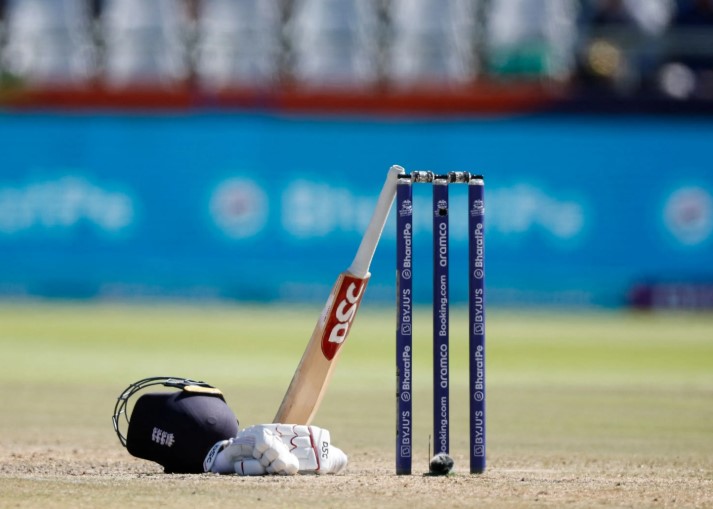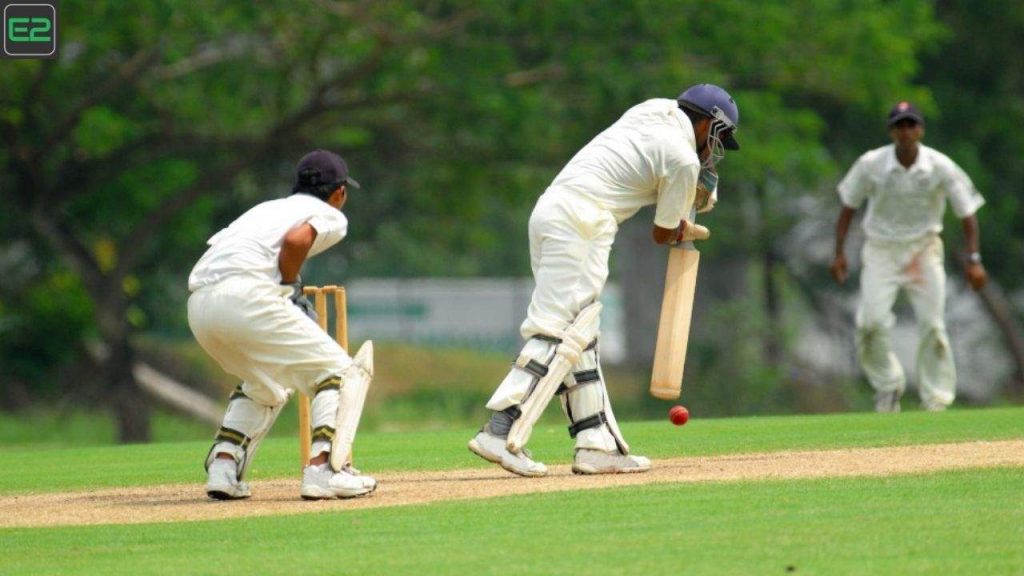Silly Cricket Rules: Cricket is a sport steeped in tradition, with a set of rules that date back centuries. Over time, as the game has evolved, some rather quirky and bizarre rules have emerged, making cricket a unique and sometimes confusing sport to follow. While some of these rules have serious strategic implications, others are downright silly and fun. In this article, we’ll explore some of the most unusual and quirky rules in cricket that have either puzzled or entertained players and fans alike.
Silly Cricket Rules: Whether you’re a cricket aficionado or a casual observer, you’ll be surprised by some of these peculiar rules that often lead to controversy or hilarity on the field.
Silly Cricket Rules: The ‘Mankad’ Dismissal

Silly Cricket Rules: One of the most debated and controversial rules in cricket is the ‘Mankad’ dismissal. Named after Indian cricketer Vinoo Mankad, this rule allows a bowler to run out a non-striker who leaves the crease before the ball is bowled. Essentially, the bowler is allowed to remove the bails at the non-striker’s end if the batsman is not in his crease when the bowler delivers the ball.
Silly Cricket Rules: While technically within the laws of cricket, the Mankad is often considered unsportsmanlike by many, as it involves deceiving the batter before the ball is bowled. However, it remains a part of the game, and there have been several instances where the Mankad has made headlines.
Mankad vs. Traditional Run Out
| Mankad | Traditional Run Out |
|---|---|
| Bowler runs out the non-striker before bowling the ball | Fielder or bowler runs out the striker after the ball is played |
| Legal under the Laws of Cricket | Also legal but seen as more sporting |
| Often debated and controversial | More universally accepted in cricket |
The ‘Obstructing The Field’ Rule
Silly Cricket Rules: In cricket, the rule of “Obstructing the Field” is not as well known but is certainly a quirky one. According to this rule, a batsman can be given out if they deliberately obstruct the fielding team, either with their bat or body, without trying to play the ball. For instance, if a batsman uses their hand or bat to deliberately block a ball, the fielding side can appeal for this dismissal.
Silly Cricket Rules: This rule is rarely invoked but has been seen in some bizarre instances. One famous occurrence of this rule was when England’s Ben Stokes was given out for obstructing the field during a match against Australia in 2017, when he stopped the ball with his hand after playing a shot.
Obstructing The Field vs. Regular Dismissal
| Obstructing the Field | Regular Dismissals |
|---|---|
| Batsman deliberately blocks the ball with hand or body | Batsman gets out by being bowled, caught, or run out |
| Rarely used but a legal dismissal | Common and more accepted in cricket |
| Can be contentious if the obstruction was accidental | Obvious dismissals with no confusion |
The ‘No Ball’ For Overstepping The Line

Silly Cricket Rules: A ‘no-ball’ is a delivery that breaks the rules, but did you know that one of the most common no-balls, overstepping, can result in some rather quirky situations? A bowler who oversteps the crease while delivering the ball will have their delivery called a no-ball, and this can sometimes lead to some strange outcomes.
Silly Cricket Rules: In modern-day cricket, the third umpire uses technology to monitor the bowler’s front foot and can call no-balls automatically. However, the rule of overstepping the line can lead to instances where a bowler has taken a wicket but is penalized for overstepping, effectively “wasting” the wicket.
No Ball For Overstepping
| Overstepping No-Ball | Regular No-Ball |
|---|---|
| Bowler crosses the line when delivering the ball | Bowler delivers a dangerous or unfair ball (e.g., overarm delivery) |
| Often results in a free-hit for the batter | May lead to a wide, or a penalty for the fielding team |
| Can nullify a wicket taken if overstepped | Can lead to multiple consequences for the fielding side |
The ‘Dead Ball’ Rule
Silly Cricket Rules: In cricket, a ‘dead ball’ is a moment when the ball is no longer in play. However, it’s not always obvious when the ball is officially declared dead. Some quirky situations arise, especially when the ball is still in motion, and the batsmen are unsure if the ball is “alive” or “dead.”
Silly Cricket Rules: For example, when a fielder or bowler interferes with the ball (whether by touching the ball when it is out of play or when a bowler oversteps), the umpire may declare the ball dead. This can also happen when a fielder throws the ball over the boundary line or when the ball strikes the stumps without a valid attempt to dismiss the batsman.
Silly Cricket Rules: The ‘dead ball’ rule can confuse spectators, especially if the ball is moving toward the boundary or seems like it could lead to a wicket.

Dead Ball Scenarios
| Dead Ball Condition | Consequence for Batsmen |
|---|---|
| Bowler oversteps the line or delivers an unfair ball | Batsman remains not out, and no delivery is counted |
| Fielder or bowler interferes with the ball while in play | Batsman can take a free run, or the delivery is nullified |
| The ball hits the stumps but no legitimate attempt at a dismissal is made | No dismissal occurs, and the delivery is void |
The ‘Hit The Ball Twice’ Rule
Silly Cricket Rules: If a batsman accidentally hits the ball twice, they are not immediately dismissed, but there is a quirky rule that governs such a scenario. According to the laws of cricket, the batsman is not out if they hit the ball twice, as long as the second contact is unintentional. This is one of the more bizarre rules, as it would seem that any player who hit the ball twice on purpose could be dismissed.
Silly Cricket Rules: However, if a batsman intentionally hits the ball twice in a way that prevents a dismissal or runs, they could be called out for ‘obstructing the field.’
Hit The Ball Twice Rule
| First Hit | Second Hit | Outcome |
|---|---|---|
| Batsman hits the ball as part of their shot | Ball touches the bat or body again unintentionally | No dismissal, the ball is considered dead |
| Batsman intentionally hits the ball twice | Stops the ball from hitting the stumps or blocking a run | Can be dismissed for obstructing the field |
The ‘Leg Before Wicket’ (LBW) Rule

While the LBW rule itself isn’t quirky, its interpretation often leads to hilarious situations. The rule allows for a batsman to be dismissed if the ball hits their leg or pad in line with the stumps, preventing a legitimate scoring opportunity.
What makes this rule quirky is the sheer number of variables at play: the position of the batsman, the trajectory of the ball, whether the batsman was in their crease, and even whether the ball would have hit the stumps. Umpires sometimes have to make subjective judgments based on these factors, leading to controversial decisions that may seem perplexing to the audience.
LBW Rule Conditions
| Condition for LBW | Outcome for Batsman |
|---|---|
| Ball hits the batsman’s leg/pad in line with stumps | Batsman can be out if the ball was going to hit the stumps |
| Ball pitches outside the line of the off-stump | No LBW if the batsman is standing outside the crease |
| Umpire makes a subjective judgment about whether the ball would have hit the stumps | Controversial decisions, often debated |
Cricket is a sport full of intricate and detailed rules, but it’s the quirky and sometimes silly rules that make the game even more interesting. From the controversial Mankad dismissal to the perplexing “hit the ball twice” rule, these unusual regulations add an element of surprise and unpredictability to the game. While they may confuse newcomers or even seasoned fans at times, they contribute to the unique charm of cricket.

Whether you’re playing, watching, or umpiring, it’s always good to remember that cricket, in all its forms, has rules that range from logical to downright wacky. And that’s what makes the game so much fun—especially when these bizarre rules come into play and leave us all stunned!













